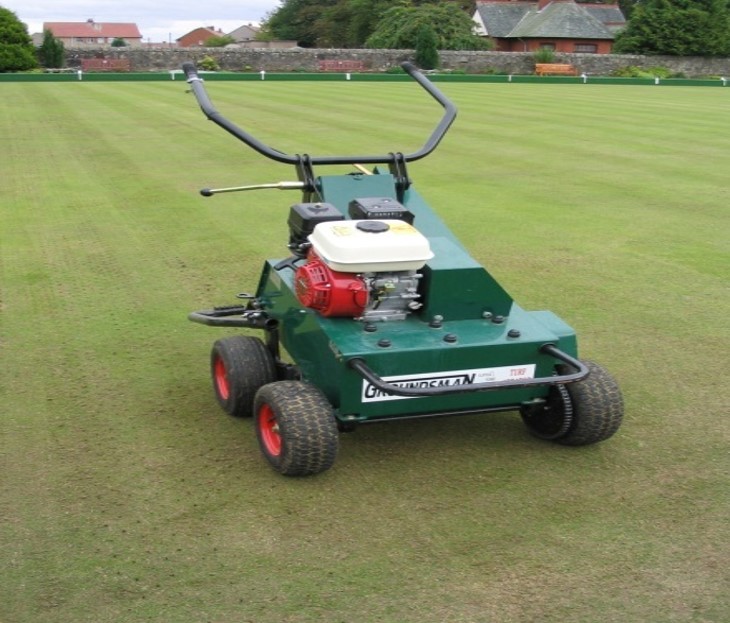Benefits of aerating a cricket square
Water, air, and roots deeper in the profile. More water, deeper in the square creates better pitches by improving rolling, the durability of pitches, and pace, bounce, and consistency. The over-winter period is vital for getting water into a square – particularly in 1st class pitches where they are under cover so often. In the winter when temperatures are cooler and the plant is more dormant, water can build up in the soil profile.
This reservoir of water deeper in the profile is important to pitch performance later in the year. It is not about wet pitches at the surface but a square that has moisture stored at depth will produce better pitches. Getting more air in will help improve soil health, encourage bacteria that break down organic matter and thatch and encourage deeper roots.
This will result in more wear-resistant plants that can dry pitches and harden them more in the summer during prep. Root depth is not the be-all and end-all of pitch performance (grass cover has a much bigger effect), but resilient plants really help maintain cover and pace for longer and to dry the pitch more evenly.
The Cranfield University research showed that most of the benefit was seen in the first aeration and that second and third treatments were less effective. Get it right first time and you should be ok. It does depend on the equipment you are using and how well you can manage moisture. When aerating a square that is too wet, the machinery seals the surface or causes damage – negative impacts that far outweighed any benefits. The trick is to time your aeration for when the square is just wet enough to get the tines in without causing damage to the square or the machine. Do it once, well.
The cricket square can naturally Decompact over winter months through frost heave, but more importantly swelling due to wetting of the soil does de-compact the soil – particularly at the surface (this is why pre-season rolling is necessary). The soil will swell and can reduce bulk density by 20% in some cases. This is a natural process and is why many squares are fine without spiking and aeration.
Try to aerate as the soil is getting wetter, not as the soil is getting drier. This is why aeration before Christmas is more effective than too long after Christmas. By aerating as the soil is getting wetter you can get more water into the profile, you will find your square easier to manage and the swelling forces of the wetting soil will help close the tine holes over time. If you spike as the soil is getting drier your tine holes will start to expand and this can cause problems, mid-January at the latest and then use February to start thinking about nutrition and getting ready for pre-season rolling and then waiting until March.
If the soil is too dry you will probably not be able to get the tines in and you will be snapping tines, breaking machinery or have a higher risk of surface damage. If the soil is too wet, you will have problems with the machinery causing surface damage. The ideal conditions are when you can just get the tines in and out of the ground cleanly, but the machinery is not smearing or rutting the surface. Use common sense. If you aerate in the wrong conditions, at best you will be wasting your time, at worse you will be looking for another square to use for the coming season.
Tops tips for aerating the cricket square.
Top tip – Take a core sample from your cricket square and look at your profile before you do any spiking.
- Do you have layers?
- How deep are your roots?
- Is there moisture at depth?
- How dense is the profile?
- Are your problems caused by thatch?
Spiking is an underground tool solving underground problems, so you need to look underground to identify the problems and see whether what you are doing is working. For example, if your problem is thatch, spiking doesn’t solve that, you will need to look at more effective scarification. ‘Linear aeration’ (slicing deeper into the profile with scarifying blades) is not aeration, this is scarification and will help with managing thatch but will not get water to 100 mm deep in your profile.
If you have a dry friable profile at depth, you need to wet this up and spiking with the right tool in the right conditions will help.


 Tweet
Tweet